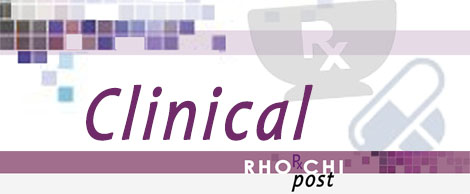
|
Antipsychotic Use in the Elderly with Dementia...
July 1, 2014 - Clinical , Featured By: Ada Seldin, Staff Editor – The overuse of antipsychotics in the nursing home population for off-label indications continues to impact patient safety. In 2005, the FDA issued a black box warning that stated, “The treatment of behavioral disorders in elderly patients with dementia with atypical antipsychotic medications is associated with increased mortality.” The evidence… |

|
Psychiatric Prescriptions in the Fight Against Juvenile...
March 1, 2014 - Clinical , Featured By: Davidta Brown, Senior Staff Editor – In August 2013, the results of a yearlong safety study were published in the Journal of American Medical Association (JAMA) Psychiatry.1 The study, which followed the health status of about 43,000 youths aged 6 to 24, confirmed and built upon a previously noted trend in adults: that the… |

|
Increased Costs of Treatment due to the DSM-V: Implicat...
April 1, 2013 - Featured , In the News / Politics By: James W. Schurr and David Gao, PharmD Candidates 2014 – A recent Op-ed in Newsday by Allen Frances, MD (of Duke University School of Medicine and chairman of the task force that produced the DSM-IV, the current guidelines for psychiatric disease diagnosis) criticizes the American Psychiatric Association for being “extravagantly indifferent to all matters… |

|
The Role of NMDA in Electroconvulsive Therapy and Other...
October 1, 2012 - Clinical , Featured By: Neal Shah, Co-Editor-in-Chief – Electroconvulsive therapy (ECT) is a last-line procedure in the treatment of refractory depression, among other neuropsychological disorders.1 By inducing a seizure, neurotransmitters are released and the disease state may feature a modest mitigation in symptoms.1 Seizure medications such as benzodiazepines and barbiturates are prescribed to increase or heighten the seizure… |

|
The Diagnosis and Management of Bipolar Disorder in Chi...
March 1, 2012 - Clinical By: Marie Huang – The amphitheater at Nassau University Medical Center fills up slowly as Dr. Alan Jay Cohen, a psychiatrist from Oakland, California, makes his way up to the podium to lead a talk about bipolar disorder, specifically differentiating between its presentations in adults versus in developing children. Among nonprofessionals, bipolar disorder is simply… |

|
Differences Between Antagonists and Inverse Agonists...
December 1, 2011 - Clinical By: Neal Shah – There are two major classifications of drug-receptor activity: agonism and antagonism. Agonism occurs when a molecule binds to a receptor, causes an exertion of normal receptor operation, and eventually causes a response. Antagonism of a receptor occurs when a molecule binds to the receptor and does not allow activity to occur.1… |